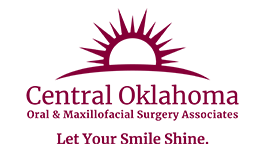Facial Trauma
There are several different types of facial trauma that a patient may experience, and the particular injuries will determine the treatment approach. Following up with an oral surgeon for further treatment after your injury is initially stabilized will result in the best long-term outcomes.
To learn more about the ways that we can help restore your smile and other facial structures after you experience trauma, schedule an evaluation at our office.
Types Of Facial Trauma And Injuries
There are many causes of facial trauma, and they can include the following:
- Falls
- Vehicular accidents
- Household accidents
- Workplace accidents
- Sports injuries
- Physical violence
The injuries that result from such facial traumas tend to fall into three primary categories. They are:
- Bone injuries, including fractures
- Dental injuries, including dislodged and damaged teeth
- Soft tissue injuries, such as lacerations to the cheek, gums or tongue
After experiencing any type of facial trauma, patients should follow up with the appropriate level of care. If the issue requires urgent treatment, go directly to the emergency room. For issues that do not need the same degree of immediate attention, call our office to be seen as soon as possible.

Seeking Treatment In The Aftermath Of Facial Trauma
Many cases of facial trauma will warrant the patient first seeking treatment in the emergency department of their local hospital. While those facilities may have oral surgeons on call, the goal of that treatment is merely to stabilize the injury.
To fully restore the structure and function of the affected area, patients should consult with an oral surgeon for ongoing treatment. Additional surgeries may be needed to repair the damage or promote adequate healing.
Procedures Used To Treat Facial Trauma
Depending on the nature of the patient’s injuries, one of the following procedures might be indicated to restore the affected area. In some cases, a combination of these treatments may be necessary.
- Corrective jaw surgery
- Bone grafting
- Soft tissue grafting/reconstruction
In cases of facial trauma, imaging tools like Cone Beam Computed Tomography (CBCT) can be particularly valuable in helping the oral surgeon visualize the surgical field and how to best repair the damage. CAD software can also help to develop a surgical guide for the best outcomes.
Importance Of Restoring Facial Structures After Trauma
Healthy, complete facial structures support a number of functions that promote our physical and mental health. An intact jaw is more effective at chewing nutritious food and allowing patients to speak clearly. Facial trauma injuries may also be unsightly, decreasing the patient’s self-esteem.
Reconstructing the injured area thus has many benefits. It can eliminate pain, restore functioning and give the patient a normal appearance. Delaying care can make achieving these goals more complicated, so schedule a consultation at our office promptly after you experience facial trauma.
Common Facial Trauma Questions:
What is maxillofacial trauma?
Maxillofacial trauma is a severe injury that damages the facial bones, teeth or soft oral tissues. It can result from various issues, ranging from falls and other accidents to violence against a person. Because maxillofacial trauma can have enduring consequences for a patient’s health and well-being, it’s important to follow up with an oral surgeon for treatment of any injuries that result from the trauma, even if the patient is initially treated in an emergency department.
What is the best way to tell if someone has facial trauma?
In most cases, patients will have an awareness of the trauma that caused their injury. However, if there is a loss of consciousness that accompanies the injury, that may not necessarily be true. Additionally, the patient may initially underestimate the severity of the trauma and not realize until later that some treatment is needed. The most prominent signs of trauma are breaks in a bone that can be felt underneath the skin or visible damage to soft tissue or a tooth. Other signs of facial trauma may include pain at the site of the injury or a noticeable change in the bite.
How do you treat broken facial bones?
The treatment for broken facial bones depends on the nature of the fracture. For example, it may be sufficient to re-set the bone into the proper location and use devices like screws and plates to hold it in place. In other cases, bone grafting may be needed to rebuild significantly compromised bone. These are just two of many scenarios. Your surgeon can advise you of the specific procedures that you will need after evaluating your case.
How can I prevent facial trauma?
Many types of facial trauma are indeed preventable with easy habits. For example, you can be sure to buckle your seat belt every time that you get in the car. Never drive while under the influence of drugs or alcohol. Make sure that your living environment is free from tripping hazards, and wear appropriate protective gear while playing contact sports. However, if you do suffer facial trauma despite taking these preventive steps, follow up with the appropriate level of care as soon as possible.
